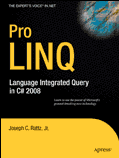 (From their website) Project Euler is a series of challenging mathematical/computer programming problems that will require more than just mathematical insights to solve. Although mathematics will help you arrive at elegant and efficient methods, the use of a computer and programming skills will be required to solve most problems.
(From their website) Project Euler is a series of challenging mathematical/computer programming problems that will require more than just mathematical insights to solve. Although mathematics will help you arrive at elegant and efficient methods, the use of a computer and programming skills will be required to solve most problems.
I decided to take a crack or two at these, even though a trillion people have done these before me (32,022 registered answers as of the time that I’m writing this). My goal is to try to do this in whatever way occurs to me at first, and then to try to solve the problem using some new technique. Over the course of solving these problems, I want to try to dig a little into F#, Ruby, C# 3.0, or whatever seems like it might be cool 🙂
Today, I attack Problem One. I’ve included the answer in the comments, so don’t read on if you don’t want to know.
namespace ProjectEuler
{
/// <summary>
/// Problem 1
/// 05 October 2001
/// If we list all the natural numbers below 10
/// that are multiples of 3 or 5, we get 3, 5, 6
/// and 9. The sum of these multiples is 23.
///
/// Find the sum of all the multiples of 3 or 5 below 1000.
///
/// The answer is 233168
/// </summary>
public class Problem1
{
public int SolveProblem()
{
int answer = 0;
for (int i = 1; i < 1000; i++)
{
if (IsMultipleOfThreeOrFive(i))
{
answer += i;
}
}
return answer;
}
public static bool IsMultipleOfThreeOrFive(int number)
{
return (((number % 3) == 0) || ((number % 5) == 0));
}
}
}
Okay, that was a snoozefest. I was reading in the Pro LINQ book (the one that gave me this post) and I found Enumerable.Range. Do the wonders of LINQ never cease? Enumerable.Range will generate a range of numbers for you so that you don’t have to do a loop. Then, you could use that range to then perform a lambda on (the divisible by 3 or 5 check) and then just sum the remaining list. It turns out that this kind of thing is *exactly* what LINQ will just knock out for you. Check the resulting code.
using System.Linq;
namespace ProjectEuler
{
/// <summary>
/// Problem 1
/// 05 October 2001
/// If we list all the natural numbers below 10
/// that are multiples of 3 or 5, we get 3, 5, 6
/// and 9. The sum of these multiples is 23.
///
/// Find the sum of all the multiples of 3 or 5 below 1000.
///
/// The answer is 233168
/// </summary>
public class Problem1
{
public int SolveProblem()
{
var problemSet = from i in
Enumerable.Range(1, 999)
where (((i % 3).Equals(0)) || ((i % 5).Equals(0)))
select i;
return problemSet.Sum();
}
}
}
Same answer? Check. Learned and used something new in the process? Check. Looks like I win the nerd prize!
 I love when things come up just in time for me to need them for a project that I’m involved in. Currently, I need to take a bunch of results and find only the intersection of those results. I was contemplating doing some lambdas to compare the lists, but then I was reading
I love when things come up just in time for me to need them for a project that I’m involved in. Currently, I need to take a bunch of results and find only the intersection of those results. I was contemplating doing some lambdas to compare the lists, but then I was reading